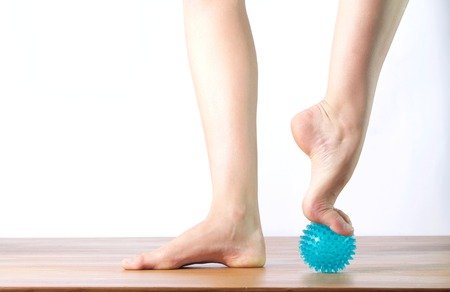How Extensor Tendonitis Stretches Can Boost Your Foot Health
Stretching is an important part of your foot health routine, especially if you have top of foot pain, stiff joints or a decreased range of motion. Why is that the case? These symptoms are signs of inflammation in your extensor tendons. (They’re the ones that control lifting your ankle and toes.) Luckily, if we catch this condition early, we can control your pain with extensor tendonitis stretches. So, today, we’re sharing some tips for incorporating these and other foot and ankle stretches into your regular footcare routine.
The Importance of General Stretching for Your Feet
When you stretch your feet, it keeps them strong and flexible, and helps preserve your range of motion. On the other hand, if you don’t stretch, your muscles can tighten up, which increases your risk for inflammation and injury.
The problems only get worse as your feet age. Regularly stretching your feet can help you hold onto flexibility. Plus, it improves your circulation and may even support better posture. As a result, you’ll find it easier to move through your day and maintain an active lifestyle.
How to Safely Start Stretching Your Feet
Before we highlight specific moves such as extensor tendonitis stretches, we must mention these important stretching guidelines. If anything you try hurts your feet or ankles, stop right away. That discomfort is a sign that you’re overdoing it, and risking injury.
When stretches do feel alright, hold each position for at least 30 seconds. While doing so, try to get in the moment, relaxing and breathing deeply into the stretch. Plan to set aside a few minutes each day to stretch your feet and ankles, as part of your daily self-care routine.
Start with Extensor Tendonitis Stretches
Even if you don’t have inflammation in your extensor tendons, this move can help improve the range of motion and stability in your ankles.
Ready to give it a try? While sitting down, write the alphabet in the air with your big toe, by only moving your ankle. Make sure the movements stay small, because that way you’ll get a better stretch in your foot and ankle muscles. Write the alphabet with each foot twice a day.
Now Stretch the Arch and Heel Tendons
After your extensor tendonitis stretches, focusing on your arch is key to preventing heel pain. You can try this next exercise with a tennis or golf ball, or even with a frozen water bottle. To begin, place both your feet flat on the floor. Next, place the rolling object beneath your foot and roll it back and forth, from your heel to your midfoot, stopping and holding the ball or bottle in place if you hit a sore spot. Try to give each foot two minutes of attention each day.
Treating Foot and Ankle Pain in Westfield, IN
Sometimes, even the best foot, ankle and extensor tendinitis stretches can’t keep foot pain away. And that’s when it’s time to call your podiatrist in Westfield, IN—Dr. David Sullivan. At the first sign of discomfort, schedule an immediate appointment, and we can help you recover with less invasive treatment options!


